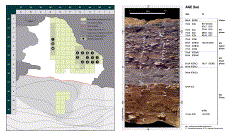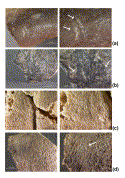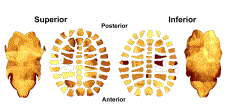Jessica C. Thompson , Christopher S. Henshilwood
Source - http://www.sciencedirect.com/science/article/pii/S0047248413002431
Journal of Human Evolution
Abstract
The site of Blombos Cave (BBC), Western Cape, South Africa has been a strong contributor to establishing the antiquity of important aspects of modern human behaviour, such as early symbolism and technological complexity. However, many linkages between Middle Stone Age (MSA) behaviour and the subsistence record remain to be investigated. Understanding the contribution of small fauna such as tortoises to the human diet is necessary for identifying shifts in overall foraging strategies as well as the collecting and processing behaviour of individuals unable to participate in large-game hunting. This study uses published data to estimate the number of calories present in tortoises as well as ungulates of different body size classes common at South African sites. A single tortoise (Chersina angulata) provides approximately 3332 kJ (796 kcal) of calories in its edible tissues, which is between 20 and 30% of the daily energetic requirements for an active adult (estimated between 9360 kJ [3327 kcal] and 14,580 kJ [3485 kcal] per day). Because they are easy to process, this would have made tortoises a highly-ranked resource, but their slow growth and reproduction makes them susceptible to over-exploitation. Zooarchaeological abundance data show that during the ca. 75 ka (thousands of years) upper Still Bay M1 phase at BBC, tortoises contributed twice as many calories to the diet relative to ungulates than they did during the ca. 100 ka lower M3 phase. However, in spite of the abundance of their fossils, their absolute caloric contribution relative to ungulates remained modest in both phases. At the end of the site's MSA occupation history, human subsistence strategies shifted to emphasise high-return large hunted mammals, which likely precipitated changes in the social roles of hunters and gatherers during the Still Bay.

Figure 2.
Layout and stratigraphy of Blombos Cave. Areas of the cave from which the ungulate sample derived are indicated with a filled pattern. The subsampled areas from which tortoise data were also derived is indicated with a “1” for M1, a “3” for M3, and a filled circle for both. The total analysed tortoise NISP is indicated on the section photograph.

Figure 3.
Human modification on tortoise elements with enlargements of areas of interest at right: a) two cut marks on a limb; b) a scrape mark on the interior of the carapace, with the boundaries indicated by arrows; c) and d) percussion marks on the exterior of the carapace with arrows indicating microstriation patches within smoothed areas where the bone surface has been compressed and the texture modified by contact with the percussor.

Figure 4.
The distribution and intensity of burning patterns on the shell showing preferential burning on the carapace and around the edges of the plastron, and indicating cooking carapace side down while the tortoise was complete. Darker areas are more heavily burned parts of the skeleton and white hollow areas are places in the skeleton not represented by any specimens.